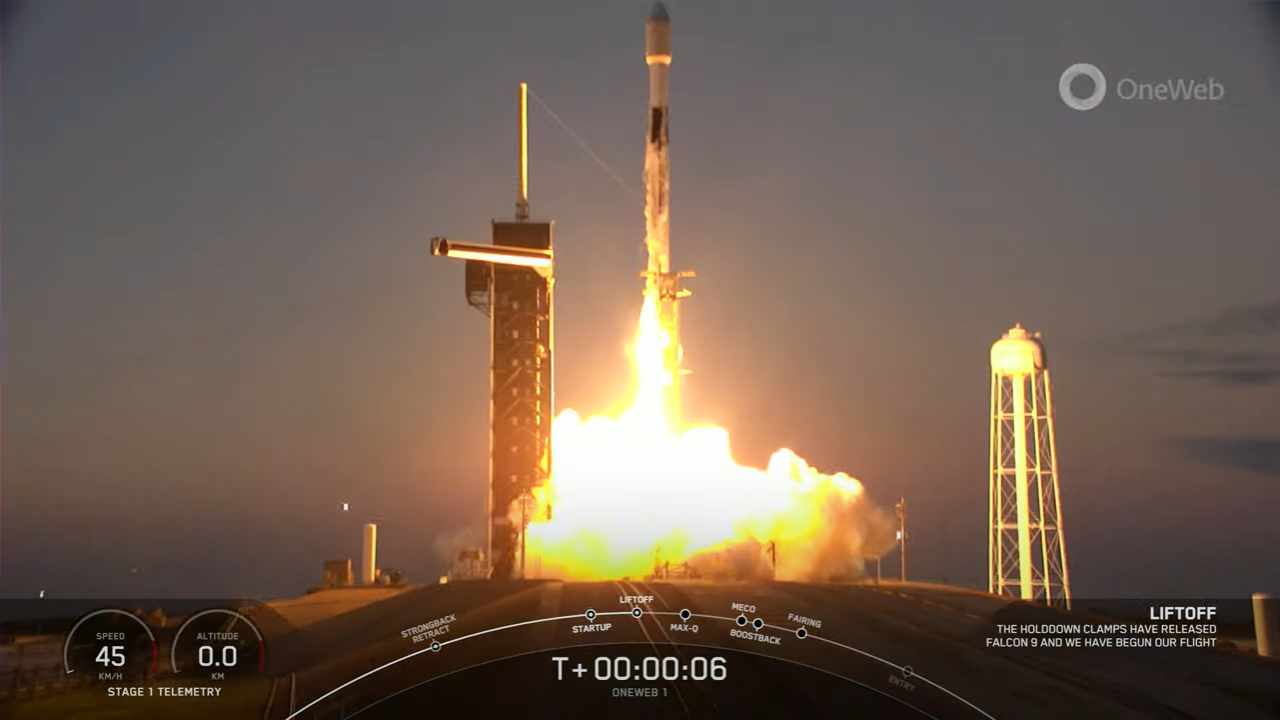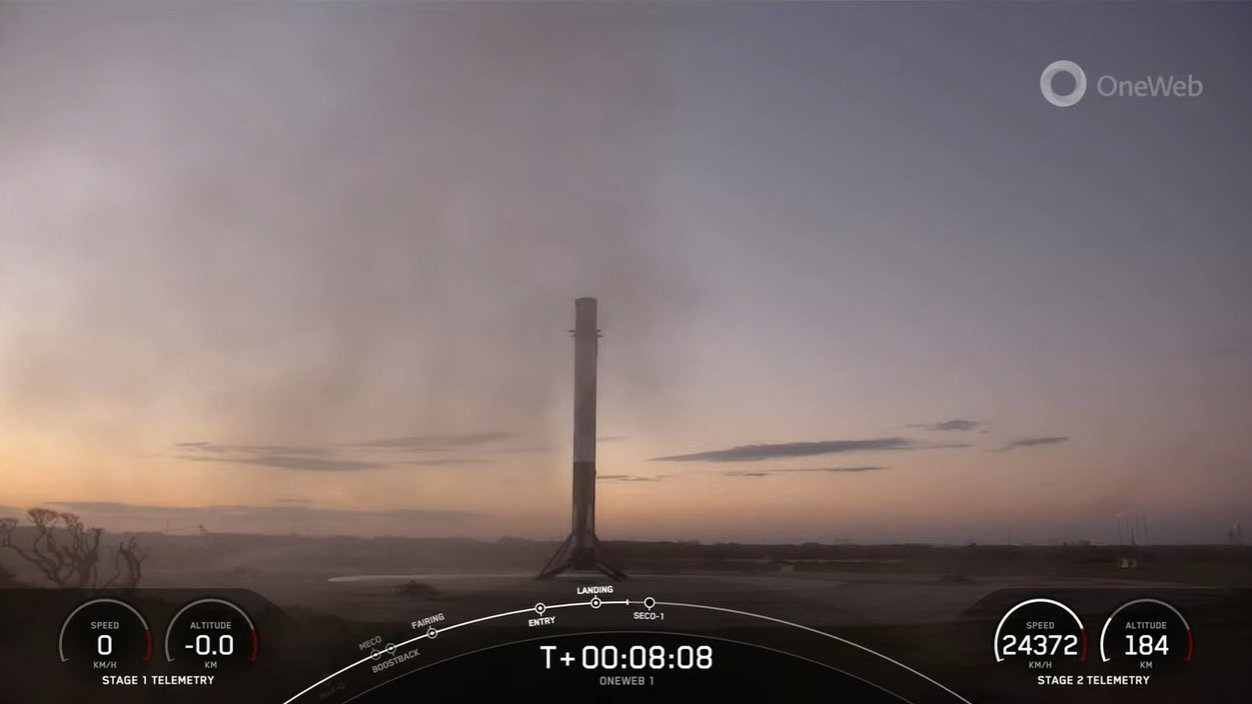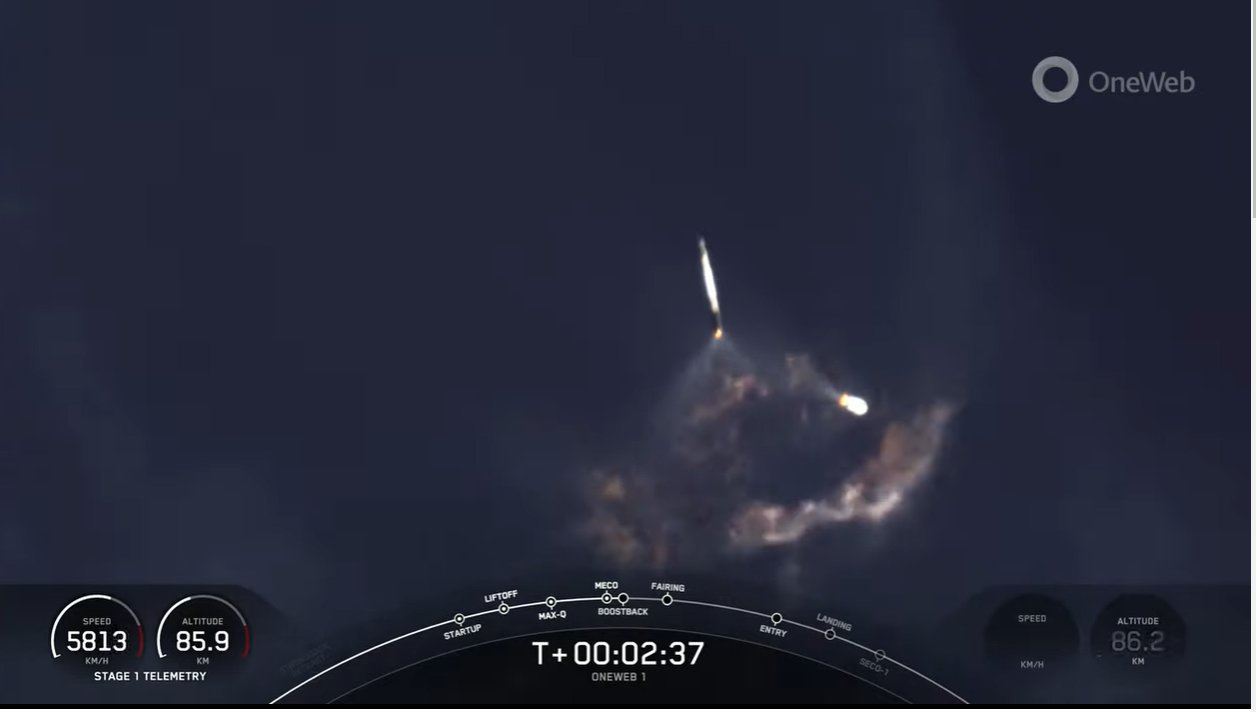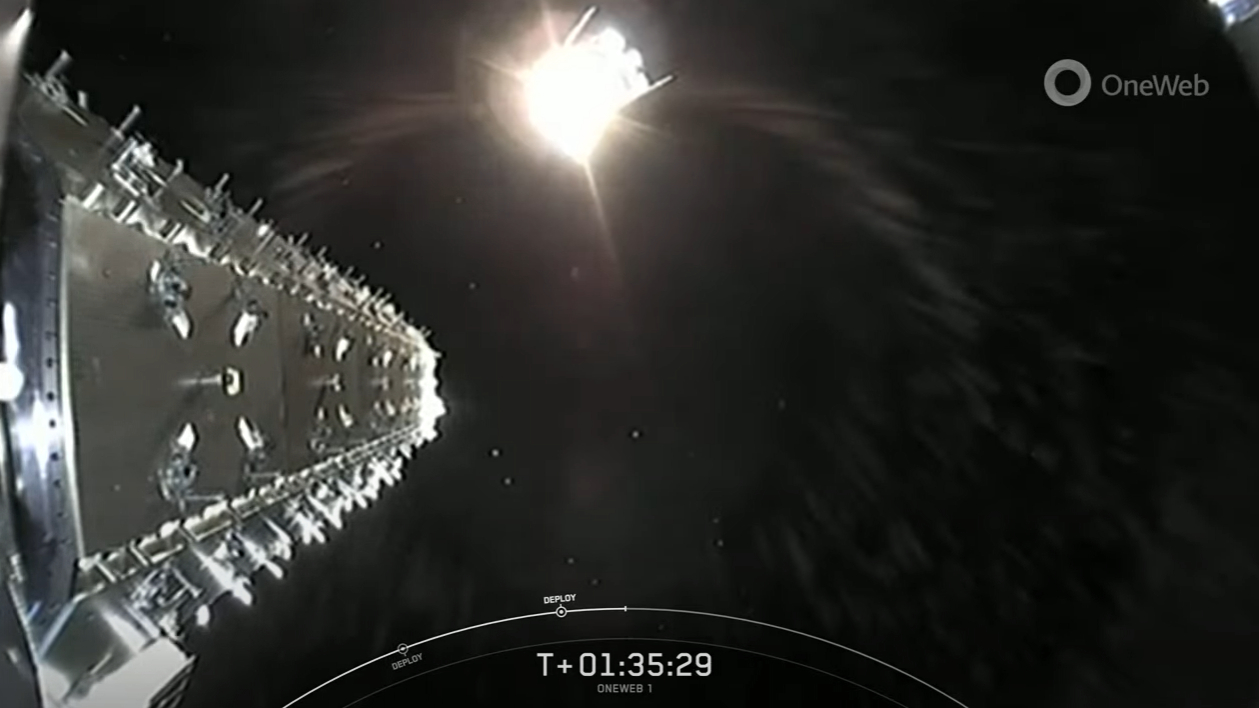SpaceX launched a big batch of OneWeb internet satellites into orbit Thursday evening (Dec. 8) on a mission that supports a megaconstellation competitor after OneWeb's own launch plans were derailed by Russia's invasion of Ukraine.
A Falcon 9 rocket carrying 40 OneWeb satellites launhed from NASA's Kennedy Space Center (KSC) in Florida Thursday at 5:27 p.m. EST (2227 GMT), soaring into orbit in a dazzling sunset liftoff. Cameras on the ground captured stunning views of the Falcon 9 as its first stage separated, then returned to Earth to make a pinpoint landing on a SpaceX pad at the nearby Cape Canaveral Space Force Station.
"We did just get back confirmation of a nominal orbital insertion," SpaceX propulsion engineer Youmei Zhou said shortly after the landing during live launch commentary.
Related: 8 ways that SpaceX has transformed spaceflight
The Falcon 9 first stage landing was SpaceX's 145th successful rocket recovery and the fourth launch and landing for this particular booster, according to a SpaceX mission description. It previously launched a SpaceX Dragon cargo mission to the International Space Station for NASA in December 2021, Eutelsat's Hotbird 13F spacecraft this past October, and one batch of SpaceX's Starlink internet statellites.
The Falcon 9's upper stage, meanwhile, continued carrying the OneWeb satellites to orbit.
"We have liftoff! Our 40 satellites have left the ground in Florida," OneWeb announced via Twitter after launch. "Thanks to our colleagues at @SpaceX for a successful lift off."
Get the Space.com Newsletter
Breaking space news, the latest updates on rocket launches, skywatching events and more!
The Falcon 9 deployed the spacecraft as planned in three roughly equal sets, beginning at 58 minutes post-launch and ending 30 minutes after that.




OneWeb is building a 648-satellite broadband constellation in low Earth orbit, which will compete to some degree with SpaceX's Starlink. More than 460 OneWeb spacecraft had reached orbit before today's flight, the vast majority of them atop Russian-built Soyuz rockets operated by French company Arianespace.
That arrangement fell apart after Russia invaded Ukraine in February, leaving a launch gap for OneWeb. The company soon filled it, inking deals with SpaceX and New Space India Limited (NSIL). (Terms of those contracts have not been disclosed.)
The first liftoff under the NSIL deal occurred on Oct. 21, when an Indian GSLV Mark III rocket successfully lofted 36 OneWeb spacecraft. Thursday's launch marked SpaceX's first OneWeb mission. It was also OneWeb's first launch from Florida and meant OneWeb now has more than 500 satellites in orbit.

Thursday's liftoff had been scheduled for Tuesday (Dec. 6), but SpaceX pushed it back to perform more checks — something Elon Musk's company has done with several of its Falcon 9 rockets recently. It was SpaceX's 55th launch of 2022.
Editor's note: This story was updated at 6 p.m. EST to note the successful liftoff of the OneWeb mission by SpaceX. An earlier version of this story incorrectly identified SpaceX's launch commentator. She is Youmei Zhou, a SpaceX propulsion engineer. The story was updated again at 9:35 p.m. EST with news of successful satellite deployment.
Mike Wall is the author of "Out There" (Grand Central Publishing, 2018; illustrated by Karl Tate), a book about the search for alien life. Follow him on Twitter @michaeldwall. Follow us on Twitter @Spacedotcom or on Facebook.
Join our Space Forums to keep talking space on the latest missions, night sky and more! And if you have a news tip, correction or comment, let us know at: community@space.com.

Michael Wall is a Senior Space Writer with Space.com and joined the team in 2010. He primarily covers exoplanets, spaceflight and military space, but has been known to dabble in the space art beat. His book about the search for alien life, "Out There," was published on Nov. 13, 2018. Before becoming a science writer, Michael worked as a herpetologist and wildlife biologist. He has a Ph.D. in evolutionary biology from the University of Sydney, Australia, a bachelor's degree from the University of Arizona, and a graduate certificate in science writing from the University of California, Santa Cruz. To find out what his latest project is, you can follow Michael on Twitter.









